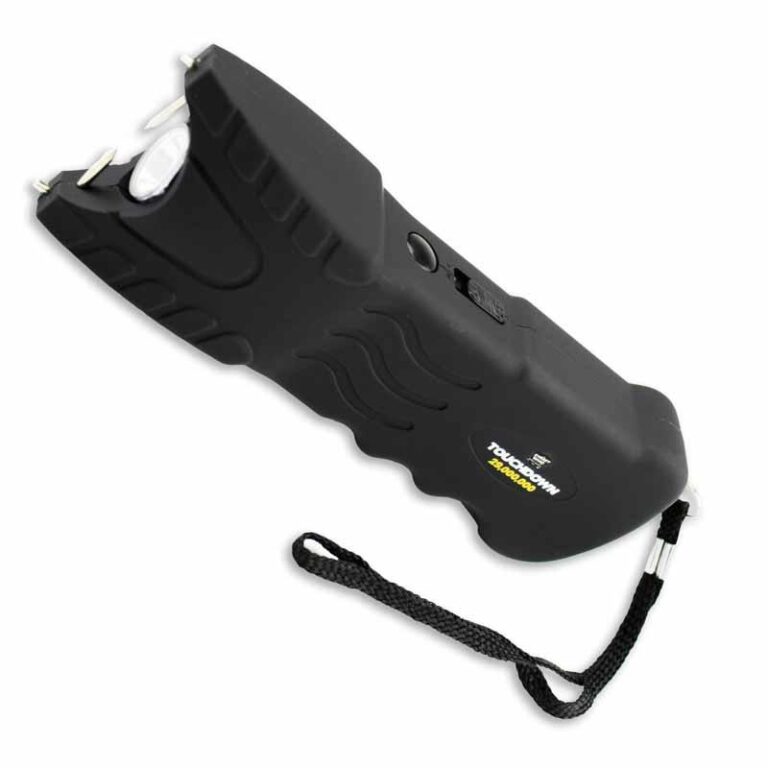Table of Contents
- Understanding the Fundamentals of a Solid Defensive Stance with a Stun Gun
- Optimizing Body Positioning to Maximize Control and Safety
- Techniques for Effective Targeting While Maintaining Balance
- Essential Safety Precautions to Prevent Accidental Discharge and Injury
- The Way Forward
Understanding the Fundamentals of a Solid Defensive Stance with a Stun Gun
A solid defensive stance when wielding a stun gun is more than just a physical position-it’s the foundation of confidence and control in any self-defense scenario. Key elements include maintaining a balanced posture with feet shoulder-width apart and knees slightly bent to absorb impact or sudden movements. The stun gun should be held firmly but not rigidly, allowing for quick activation without compromising wrist flexibility. Keep your body angled slightly sideways to reduce your profile and make it harder for an attacker to strike effectively.
To further enhance your stance, focus on these fundamental principles:
- Keep your dominant hand ready with the stun gun positioned at waist level, easily accessible and aimed toward potential threats.
- Use your non-dominant hand to guard vital areas such as the face and torso, preparing to deflect attacks.
- Maintain eye contact with the aggressor, as it communicates alertness and deterrence.
- Practice controlled breathing to stay calm and centered, which improves reaction time and reduces panic.
Optimizing Body Positioning to Maximize Control and Safety
Achieving a balanced and controlled stance is crucial for both effective defense and personal safety when wielding a stun gun. Focus on distributing your weight evenly between both feet, with a slight bend in the knees to maintain agility and quick responsiveness. Position your feet shoulder-width apart to create a solid foundation-this not only enhances stability but prevents you from being easily pushed off balance. Keep your center of gravity low by leaning slightly forward, which prepares you to absorb impact or make sudden movements if necessary.
Maintaining an optimal body position also involves strategic hand and arm placement. Hold the stun gun firmly with your dominant hand while keeping the other hand ready to block or create distance from an aggressor. Remember these key points for maximum control and safety:
- Keep your elbows slightly bent to allow for swift adjustments without compromising reach.
- Position your non-dominant hand to protect your head and torso, serving as a barrier.
- Align your wrists properly to ensure precise targeting and to reduce the risk of injury.
By mastering these positions, you’ll enhance your ability to respond effectively in high-pressure confrontations, ensuring that every movement adds to your defense rather than putting you at risk.
Techniques for Effective Targeting While Maintaining Balance
Precision in aiming a stun gun is paramount, yet it should never come at the cost of your balance and overall safety. To achieve this, start by grounding your feet shoulder-width apart, creating a solid foundation that distributes your weight evenly. This stance not only improves your targeting accuracy but also prepares you to absorb any counterforce. Incorporate small, controlled movements rather than large, sweeping motions to maintain stability. Keeping your knees slightly bent and your body relaxed allows for quick adjustments without compromising your footing.
Effective targeting hinges on a harmonious combination of steady posture and focused intent. Prioritize aligning your dominant hand with your line of sight to the target, which enhances precision while minimizing unnecessary body shifts. Utilize these key techniques:
- Engage your core muscles for added support, helping to keep your upper body steady.
- Maintain consistent breathing to avoid tension, which can disrupt your aim.
- Practice trigger control in tandem with balanced footwork, ensuring that your response is both swift and controlled.
Essential Safety Precautions to Prevent Accidental Discharge and Injury
Handling your stun gun with mindful awareness is the cornerstone of safety. Always ensure the device is pointed away from yourself and others when not in active use. Engage the safety lock immediately after use or when storing the device to prevent accidental discharge. Remember, the stun gun is a tool meant for defense, not play, so avoid any unnecessary handling or testing outside controlled environments. Additionally, regularly inspect your device for any signs of damage that could increase the risk of malfunction or inadvertent activation.
When carrying your stun gun, consider the following practices to minimize risk:
- Use a dedicated holster designed specifically for your stun gun to keep it secure and reduce accidental contact with activation buttons.
- Keep the device out of reach of children and unauthorized individuals, preferably in a locked container or safe storage area.
- Never carry the stun gun in your hand unless absolutely necessary-this limits the chance of unintended discharge in stressful situations.
The Way Forward
Mastering defensive stance techniques with a stun gun is an essential skill for anyone serious about personal safety. By combining proper stance, situational awareness, and responsible use, you not only maximize the effectiveness of your stun gun but also ensure your own protection and the safety of those around you. Remember, confidence and preparedness come from practice and knowledge-so take the time to train regularly and stay informed on local laws and best practices. Stay safe out there, and empower yourself with the skills to handle any situation calmly and effectively.Check Our Other Blogs
- StunGun – Your Trusted Source for Stun Guns, Laws, and Self-Defense Tips
- PepperSprayLaws – Your Trusted Resource for Pepper Spray Information
- StunGunLaws – Your Trusted Guide to Stun Gun Legality and Safety





